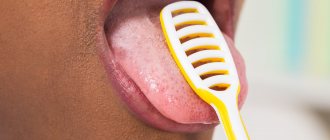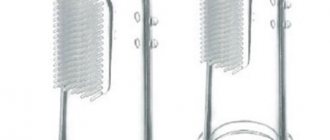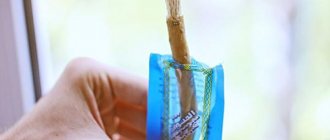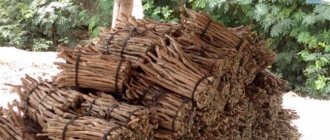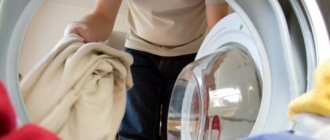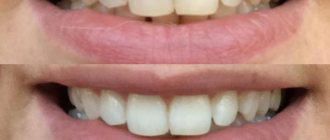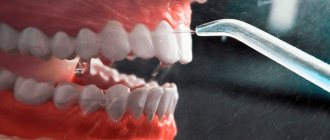How can you dye fabric white?
How to dye fabric white
Painting a thing
white
will not work.
But the product can be discolored. This is done using Belizna or Domestos cleaning product. for thin and delicate fabrics
.
Interesting materials:
What is Uber's commission? Which chicken is healthier, boiled or baked? Which lamp produces more heat? What is the maximum depth of the World Ocean? What was the maximum radiation in Chernobyl? What is the maximum speed of the bus? Which laptop brand is the most reliable? What is the minimum salary in South Korea? Which laptop model is the best? What milk causes acne?
Using blue for linen
More effective coloring and refreshment of natural linen can be achieved thanks to the instructions for use of this drug. In the description, pay attention to the procedures in which this substance is used. Certain types of blue are used during washing, some varieties - during the main or final rinsing or soaking process.
It doesn’t matter whether you are going to dye clothes or simply turn your linen blue, the main thing is to use a material based on natural cotton or linen fibers. In order to ensure the quality of the product and its correct dilution, you can initially experiment on a small piece of fabric.
Most often, classic shades of jeans, blue and light blue underwear, and less often white fabric are dyed blue. In order to get a good tinting result, use water-soluble bluing for rinsing. Insoluble may give unwanted divorce). Before use, dry or liquid coloring pigment is thoroughly dissolved in water until a uniform color without clots is obtained. To obtain an ideal solution, the liquid is often filtered through several layers of gauze.
The dyeing process should only be done with clean, washed and rinsed laundry. If the item is large enough, it is best to paint it in the bath. The container is filled with water so that the water completely covers the material. The dye solution is poured into the bath, and the color scheme is regulated by both the concentration of the solution and the volume of water in the vessel. The linen is lowered into the bathtub in a straightened form without folds or bends and kept for a certain amount of time. Good color fixation is achieved after 1-2 hours, but in the instructions for use you can find a more detailed description of the ratios of types of fabric and tinting time. After this, the item is rinsed in plain water or water mixed with vinegar and hung flat to dry.
To eliminate the yellowish tint on white linen, you can use a weak blue solution. Ultramarine gives the material a slightly noticeable bluish tint, which makes the fabric visually whiter.
Manual method
With the manual method, the laundry is blued at the time of the last rinse. To do this, prepare a solution of the dye in the ratio: 0.3 g of powder per 10 liters of water or 2/3 tsp. a paste-like substance or 1-2 dragees are placed in a tightly tied gauze or fabric bag and dipped in water prepared for rinsing clothes. The bag of pigment is soaked until the desired uniform shade is obtained. Liquid blue is dissolved at the rate of 3-4 drops of the substance per 1 liter of cool water. After this, the laundry is lowered into the water (preferably not all at once, but one item at a time) and held for 3-5 seconds.
In the washing machine
Modern bluing agents can be used when washing and dyeing materials and in automatic washing machines, if this is indicated on the preparation. With the mechanical method, it is also necessary to check the liquid dye solution for the presence of unnecessary clots, and thoroughly dissolve the powdery substance in water and remove excess grains of sand, which can lead to damage to clothing. Blue is added to the drum or compartment for cleaning solutions. If the description of the coloring agent recommends adding salt or soda, then you should heed this advice. This is necessary to fix the color. Depending on the density of the fabric, you need to choose the type of washing. This can be intensive washing, cotton processing or washing at 90-95 degrees Celsius. After automatic washing, it is advisable to place the fabric in a container with a vinegar solution to fix the color. To prevent other items from becoming stained when processed in the washing machine, the equipment is run empty and a little bleach is added to the powder compartment. After manipulations, the inside of the machine is wiped dry.
How to save the result
Dyed denim requires special treatment. How to properly care for these products:
- Wash in warm water, temperature no higher than 40 degrees.
- We recommend manual wet cleaning or machine cleaning on a delicate cycle.
- The best detergent is dark laundry soap. Soap shavings are prepared for machine washing.
- Dyed jeans are washed separately from other items.
- It is advisable to avoid air conditioning.
Advice! When experimenting with dyes at home, you should act carefully. It is better to practice on an unnecessary piece of matter.
When analyzing the details, it turns out that dyeing jeans at home is not a difficult process, and the materials are generally cheap. All that is required from the needlewoman is attentiveness, caution when working with hot solutions and a willingness to take risks.
blue for linen in stock. This is a powder for quickly enhancing the color of white or blue bedding and clothing made from natural fabrics. Currently, there are many powders that contain bleaches and various color additives for additional color saturation. But nevertheless, blue remains the most accessible substance, which gives fabrics not only freshness and newness, but also the desired shade if the blue substance is used as a dye.
Blue is most often starch, the composition of which is combined with blue mineral paint, mainly ultramarine, blue aniline dyes, indigo carmine, Paris blue or Prussian blue. Household blue is available in liquid, paste or powder form and is divided into two types: soluble and insoluble. Dyes that are highly soluble in water guarantee more uniform toning, coloring and saturation. Insoluble ones are much cheaper and are mainly suitable for refreshing linen made from natural fabrics. You can buy fabric blue in any store in the household chemicals department.
Using the washing machine
If allowed, bluing for washing clothes can be used in the washing machine. You can also do coloring. The work is performed in the following sequence:
- You should check whether there are any dense lumps in the liquid dye, and the powdered dye should be diluted with water. Grains of sand can ruin clothes and leave bright stains on them.
- The product is added to the drum of the machine. If the instructions say to add soda or salt, then do so. This is required to fix the color.
- You need to choose an intensive wash if the fabric is thick. And the temperature is 90-95 degrees. The cycle is long.
- Do not use washing powders, rinse aids and other products.
- After washing, jeans should be placed in a basin to soak in vinegar, which will fix the color.
- To prevent other clothes from getting dirty, the car is turned on at idle speed and then wiped from the inside. It is advisable to add a small amount of bleach to the powder compartment.
When using blue, you need to consider that:
- A quality product will not stain your hands or bathtub. If traces of it remain, there is a possibility of damage to the item.
- Blue is not considered a permanent dye - it fades with each wash, so repeated procedures are required. For lasting results, you need to use special paints for materials.
Each item needs to be processed separately if you want to get an excellent result. It is necessary to adhere to the rules of the procedure, observing the time period for painting.
The dyes have good resistance to external factors, so you can safely wash them. But you should not prolong the procedure or change the temperature. It is advisable to wash the item by hand with water at 40 degrees. Thus, blue can be used to color things. It is usually used for jeans. Even an old thing takes on a new look.
Openwork curtains not only add individuality and comfort to the home, but also show the taste of the housewife. Sometimes women refuse such beauty, replacing tulle with blinds. They explain this by their busyness, since bleaching tulle at home is troublesome. But in reality, this is not a problem at all.
Tulle is sewn from various fabrics, but always very soft and airy. Silk, viscose, polyester, nylon, cotton and even wool are suitable for such delicate work. Wool is woven into an openwork, thin veil.
Methods for dyeing jeans
Dyeing of jeans can be done using different technologies, the choice of which depends on the type of dye, type of fabric and the wishes of the owner.
"Varenki"
You can give your jeans a washed-out effect by using chlorine-based bleach. The pants will have picturesque snow-white streaks and attract the attention of others.
The process of creating dumplings is as follows:
- pour 250-300 ml of bleach into a metal bucket of water;
- Twist clean jeans several times and tie them tightly with rope;
- folded, immerse the product in the composition;
- put the container on the stove and boil for 20 minutes;
- Rinse the item in cool water and dry as usual.
In the washing machine
A washing machine can make the dyeing process easier. However, it is possible that she herself may get dirty with the dye.
How to dye your jeans:
- wash the product thoroughly and dry it;
- prepare the coloring composition, if it requires dilution in water - get rid of all lumps by straining it through a cloth;
- put the jeans in the car, pour out the composition;
- select the required mode (for at least 2 hours, with a maximum temperature that the jeans fabric will allow);
- after washing, place the item in a bowl with slightly salted water for 30 minutes;
- run another washing mode to remove dye;
- After painting, inspect the drum of the machine; if there are traces of paint on the door rubber, wash it with laundry soap.
In enamel dishes
The manual dyeing process involves the use of an enamel bowl.
It goes like this:
- dilute the coloring matter in a separate container, strain it;
- stir the paint in a basin with 7-8 liters of water;
- heat a bowl on the stove;
- put jeans in hot liquid;
- boil the product for an hour;
- rinse the item in hot and cold water;
- fix the color by rinsing in a vinegar solution;
- wash jeans with a mild detergent.
How to prepare jeans for dyeing
Working with dyes requires preliminary work. A few rules for dyeing jeans yourself:
- If you need to update the color, then paint for gins is selected to match. And if a stubborn stain appears on the product, then you should try a darker paint.
- Before the procedure, you must thoroughly wash and dry the product.
- If possible, all stains from fruit juice, wine, ink, grass and grease should be removed with colored fabric bleach. These marks may affect the coloring result.
- A special paint is selected for each type of material. Not all substances are combined with certain tissues. Information should be found on labels and in the instructions for dyes.
- To ensure uniform tone, the dye should be diluted in water and filtered. This way you will be able to avoid lumps of paint and, as a result, stains on your jeans.
- If you want to achieve the effect of streaks and stains, the jeans are rolled up and tied. This will cause them to color unevenly.
- Don’t forget about preparing the room: it should be well ventilated. Protective gloves must be worn on your hands.
Procedure
How is blue linen used? The instructions will allow you to perform the procedure correctly:
- Dilute the substance according to the instructions. There should be no clots of coloring agent left in the water; it should be uniform in color.
- The bath needs to be filled with water.
- Then you should lay out your clothes in the bathroom. Uniformity is necessary so that when dyeing you get one color. The water should cover the item. For a slight bluing, a few minutes are enough, and for coloring from 1 hour. For jeans you need 2 hours.
- Then the item must be dried flat.
Important
- Blue is needed for those who prefer simplified processing methods to a variety of toxic bleaching powders.
- A high-quality product does not stain containers or the skin of your hands.
- Blue is not a permanent dye. Each subsequent wash will wash out the color pigments, so re-blueing should be done from time to time.
- To obtain a good result, each item must be processed separately.
- Table salt added along with the blue when rinsing will help keep the blue color longer.
- To achieve the desired result, it is better to first practice on old things.
- Always read the instructions for use of the dye, because depending on the manufacturer, release form and composition, dyeing may have different results.
- Blue blue, which contains starch, should be boiled after dilution and then strained.
- Do not try to replace the bluing with a blue item of clothing when washing white clothes in the machine, as this may lead to unpredictable results.
- The chemical should be stored in a tightly closed container out of the reach of children.
Blue is a fairly cheap substance that can replace many expensive powders with a whitening effect. It is also an indispensable product for adding freshness to linen and richness to blue and blue clothes. Also, such a simple, popular substance as blueing can serve as a source of inspiration for creating unusual shades or patterns when dyeing.
If you decide to add a bright color to your old favorite jeans, you can dye them yourself at home. In this way, you can inexpensively and simply update an item so as not to purchase a new one. At the same time, along with painting jeans in any color (blue, black or another), you can additionally decorate them with interesting and unusual accessories.
Choice
Painting with this product should only be carried out on suitable materials. It must be taken into account that:
- Blue for laundry must be water soluble. Then you will get a uniform color - insoluble ones make streaks when used in a concentrated manner.
- Powder and liquid should be diluted with water until dissolved before use.
- The substance is used for washing and rinsing. If you need coloring, it is advisable to choose a special product.
- The product is used to dye white materials and refresh blue fabrics. Dark colors do not change, but other light colors may produce unexpected results. The substance is typically used in updating jeans.
- Linen bluing can dye natural fabrics.
Preparing for the painting process
To dye jeans without problems, you need to prepare the jeans for dyeing.
To do this, follow these steps:
- thoroughly wash the item of clothing in the usual way (by hand or in a washing machine);
- dry your jeans;
- any stain that remains on the surface can change the coloring not for the better, so you need to carefully remove each of them;
- when choosing a dye, you should pay attention to the recommendations for dyeing (not every fabric can tolerate contact with a particular substance);
- To prepare the dye, you need to carefully dilute it with water, with the obligatory breaking of lumps and filtering through a thin cloth, which will allow you to achieve uniformity in coloring.
